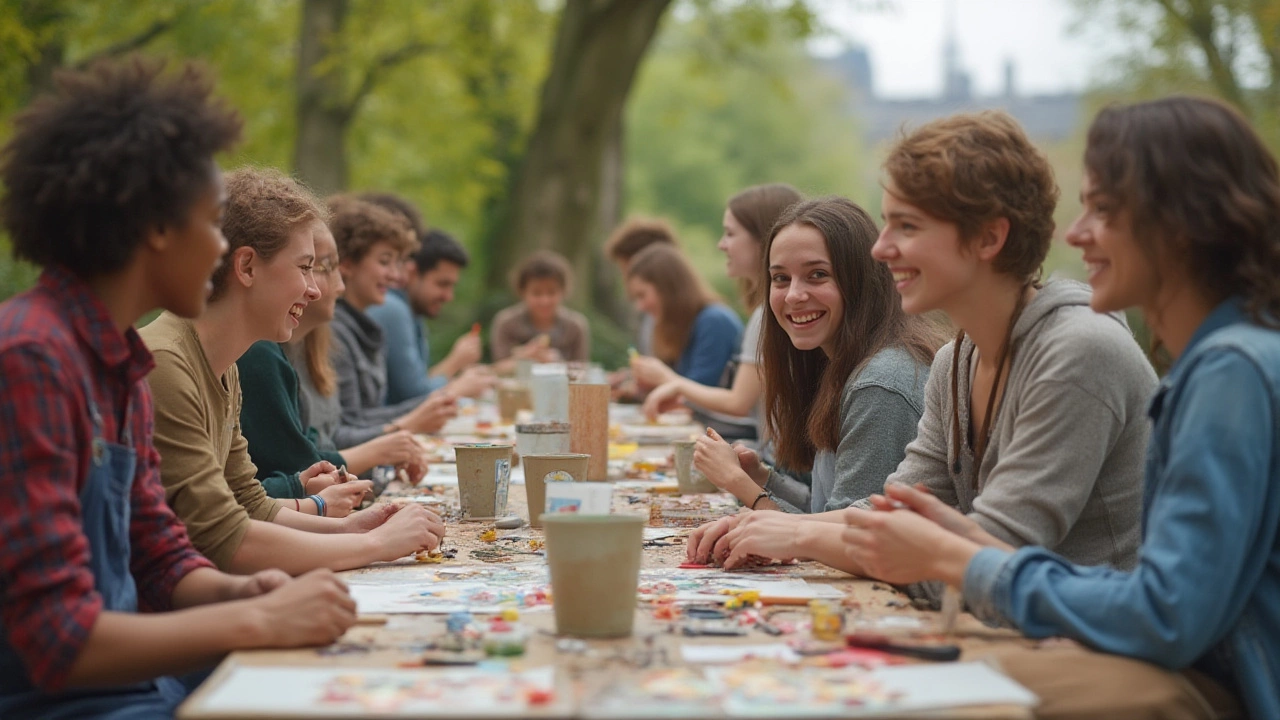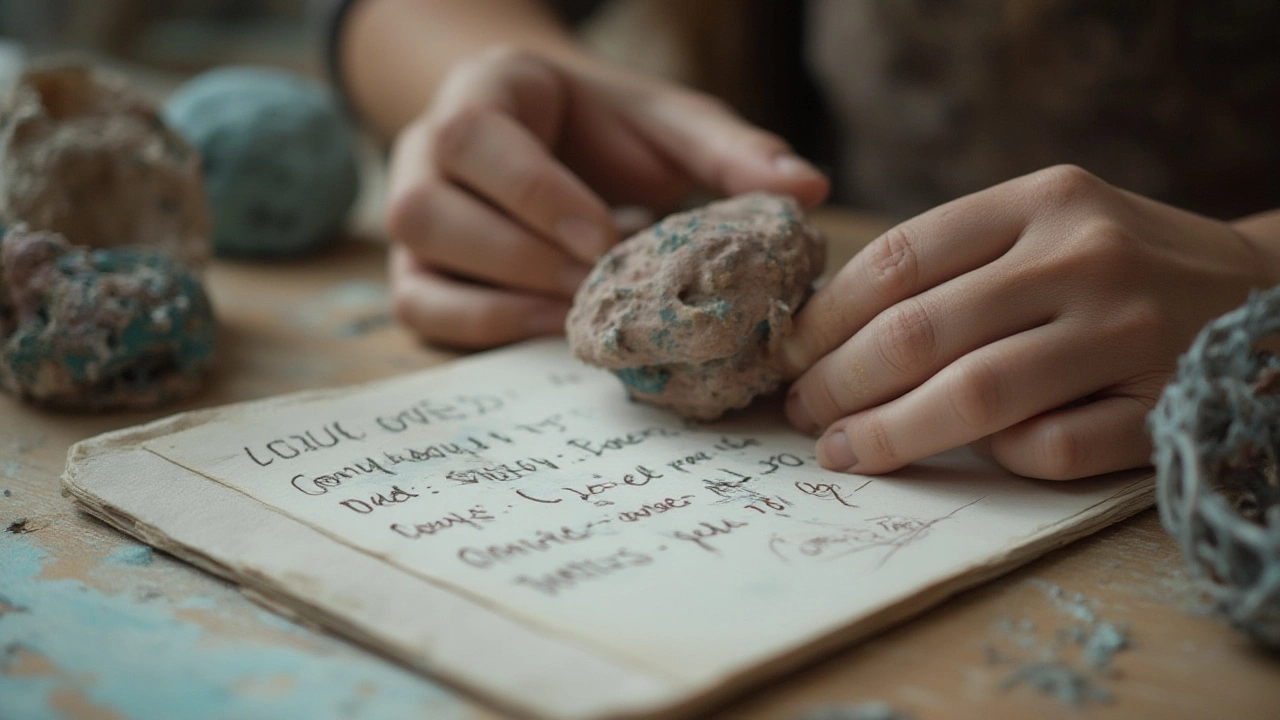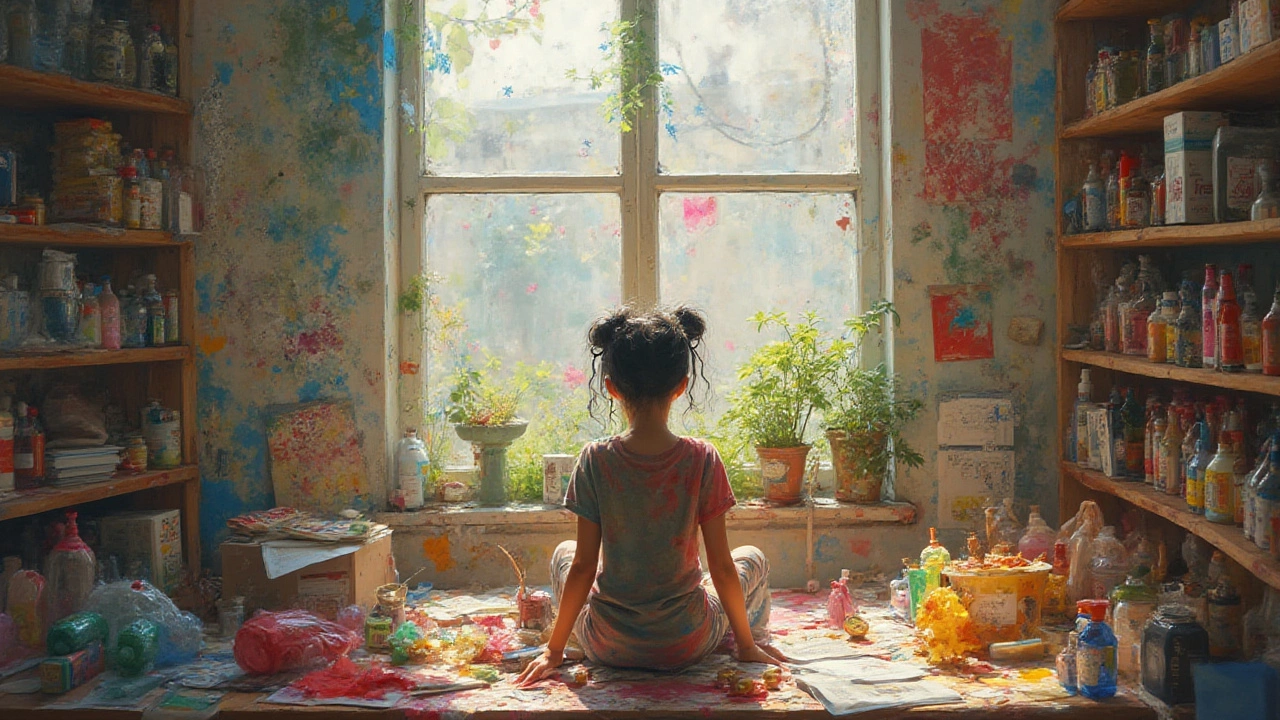You don’t need a trust fund to call yourself a sculptor. Some of the world’s most unique, attention-grabbing sculptures were tossed together from stuff most people throw away or walk by every day without a second look. Did you know Pablo Picasso once welded bicycle seats and handlebars together to make a bull’s head? Now, nobody’s saying you have to start dumpster diving for rusty metal parts tonight, but if you’ve ever wanted to make your mark without draining your wallet, this is the right place to start.
Comparing Common Sculpture Materials by Cost
The whole sculpting world isn’t limited to fancy marble blocks or polished bronze – though Renaissance artists made those materials famous. The reality is, those traditional choices are wildly expensive. Marble can cost anywhere from $20 per small block up to thousands for larger pieces. Bronze isn’t much better, with raw prices rising since the 2000s. For most of us, this means looking at cheaper, more accessible options.
If you’re new, you might be surprised at how versatile some simple materials can be. Air-dry clay, for example, comes in around $1.50 to $2 per pound if you snag a deal at an art supply store, and it doesn’t need a kiln. Then there’s papier-mâché, which basically costs the price of a newspaper (or any paper scraps) and some white glue. Cardboard is often free if you check recycling bins or grab leftover boxes from stores. Armature wire can cost a little, but for people creating smaller models, aluminum foil actually does the trick for almost nothing. Here’s a quick peek at what you might spend on popular alternatives:
| Material | Average Cost (per small project) | Notes |
|---|---|---|
| Papier-mâché | $1 - $3 | Old paper, glue or flour; super low-budget |
| Cardboard | $0 | Often available for free |
| Clay (Air-dry) | $2 - $5 | No kiln needed, easy cleanup |
| Foil (Aluminum) | $1 - $4 | For inner forms or detail work |
| Recycled plastics | $0 | Found in home or community trash |
| Wood (Scrap/lumber ends) | $0 - $5 | Local hardware stores often donate scraps |
Some artists have even made award-winning pieces out of kitchen sponges, soda cans, or sand. If you’re thinking sand is just for kids’ castles, take a look at sculptor Sudarsan Pattnaik – he’s won dozens of sand sculpting championships using nothing but sand and water. So, if price is your main worry, the options are much wider than most people expect.
Pros and Cons of the Cheapest Choices
When you go the ultra-budget route, the first thing you’ll notice is savings. Using cardboard, papier-mâché, or found objects means spending almost nothing, but these materials each have their quirks. Papier-mâché is messy and needs patience – you have to layer and let it dry, repeat, then sand it smooth. Don’t get too attached to a specific look before you start; absorbent surfaces mean you might need a double layer of paint for a decent finish.
Cardboard is lightweight and easy to cut with scissors or a box cutter. It’s great for building bigger forms but can be flimsy if you’re making something that needs to stand tall. Some folks reinforce it with layers or mix it with wire for extra support.
Air-dry clay gives better detail than cardboard and is less finicky than traditional clay since you don’t need a kiln or anything fancy. But it shrinks as it dries – sometimes a lot. That can mean surprise cracks or parts popping off if you don’t plan for it. It’s not waterproof; if you want your piece outside, you’ll need sealing.
- Papier-mâché: Free or nearly free, but slow; not for humid environments.
- Cardboard: Free, light, good for practice – but not durable without extra effort.
- Air-dry clay: Great for detail, but dries fast and can crack if too thick.
- Recycled objects: Unique results, but you may need more tools (glue guns, wire cutters, paint).
- Sand: Temporary. Don’t expect a museum piece – but it’s unbeatable for practicing.
The magic comes in combination. Many artists will use foil or wire as a base, cover it in clay, then add textural details with papier-mâché.

Tips for Making the Most of Low-Budget Materials
So how do you actually get awesome results with the cheapest stuff? First, keep your eyes open. Stores throw out cardboard, packaging foam, and even interesting plastic shapes. Ask nicely or scan the curb the day after people move out – you’d be amazed what you’ll find. One famous Brooklyn collective made a life-size elephant from only scrap cardboard and tape. It turned heads for months and cost them nearly nothing but time.
When using papier-mâché, mix your glue with water to the consistency of heavy cream. Use strips of non-glossy paper for strength. Want a smoother finish? Sand your sculpture after it’s fully dry and do a thin top coat with modeling paste.
With clay, go slow on water. Tiny amounts make it more flexible, but too much and it falls apart. To keep cracks at bay, build up your shape in layers, letting each dry a bit.
- Always have a plan – sketch out your idea first, even if it’s rough.
- Collect textures from household items: kitchen sponges for stippling, forks for lines, bottle caps for pressing circles.
- If you want your sculpture to last, add a sealer or protective paint once it’s totally dry.
- Paint with craft acrylics – these are cheap, come in bold colors, and stick to almost anything.
- Try combining materials for wild effects. Cardboard bones, foil muscle, then a thin clay “skin.”
You can get weird and creative. Experiment – it’s one of the best perks of not worrying about cost.
Recycled and Found-Object Sculpture: Turning Trash into Art
Ever heard of El Anatsui? This Ghanaian sculptor stitches together thousands of old bottle caps, hangers, and scrap metals to make shimmering, wall-sized masterpieces that now sell for millions. He actually started by sifting through local dumps, seeing art where others saw junk. It’s not just about saving money – found object sculpture speaks to the times: waste, excess, and transformation.
Working with found objects means a couple of things. You need to let your materials inspire the idea, not the other way around. It forces you to look at everything twice. Is that broken rake a dragon’s claw? Those bottle tops – maybe a necklace for a metallic snake? Lately, city art projects across the U.S. have even paid artists to use street litter for public sculptures. Talk about being rewarded for being creative and thrifty.
Kids’ classes and community centers often focus on this approach because it teaches both creativity and responsibility. If you’re nervous about the idea of “serious” art with trash, consider this quote from MoMA’s Curator of Painting and Sculpture, Ann Temkin:
“The reimagining of a humble, discarded object for sculpture is not just a creative act, it’s a statement about what we value – and what we throw away.”
- Scout materials at garage sales, thrift stores, or even on evening walks after recycling collection day.
- Invest in safety basics – gloves, goggles, maybe a mask if you're sanding or cutting.
- Don’t overcomplicate. The point is to start, not to get overwhelmed by fancy gear or rare supplies.
The real limit becomes your imagination and patience, not your bank account.

What’s the Absolute Cheapest Sculpture Material?
If you came here for a single answer, here’s the plain truth: The cheapest material for sculpture is whatever you can get for free – usually recycled cardboard, discarded plastic, or old paper for papier-mâché. But don’t let that limit you. In 2017, an art teacher in Kansas helped her class build a parade float dragon entirely out of grocery bags and tape. Their total spend was under $10. The lesson? Sculpting is mostly about looking at everyday stuff sideways, then putting in the elbow grease to turn it into something wild.
If you want something with a little more polish – air-dry clay is your next bet. For less than the price of a fast-food meal, you get a clean, workable material that’s easy to paint. If you’re more into the quirky or modern, try out found-objects. Your art will have a story built in, from material to masterpiece.
Want to push the low-cost boundary even further? Go natural. Sticks, mud, and stones have served sculptors for millennia. Some of Britain’s parkland sculptures are just woven willow branches – eco-friendly, free, and surprisingly beautiful.
Bottom line: Don’t wait for a big check or fancy tools to get started. Grab what’s handy, make a mess, and see what happens. Picasso, after all, once said, "Every child is an artist. The problem is how to remain an artist once we grow up." Stop worrying about money and make something amazing for next to nothing.

